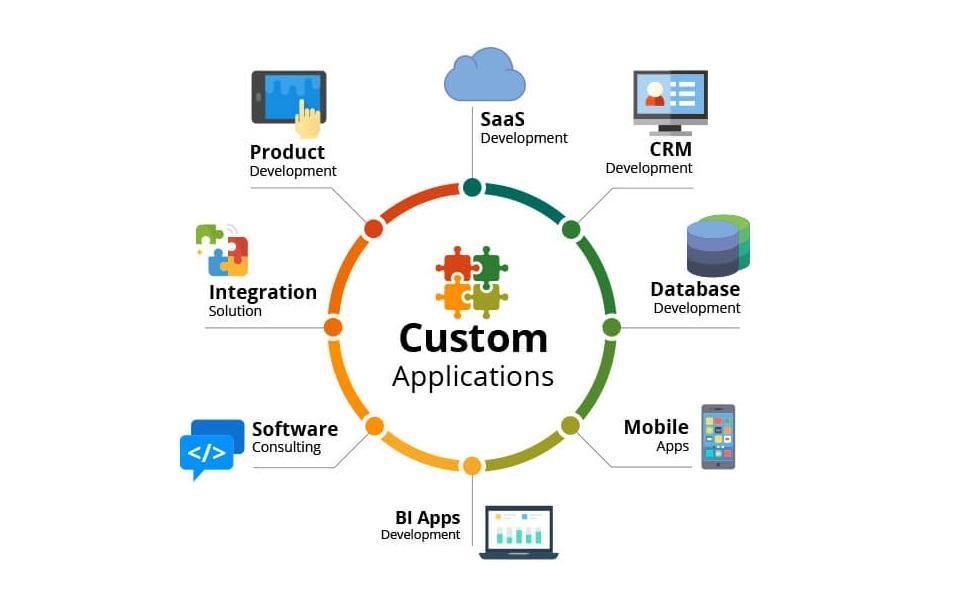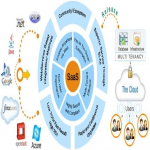
Custom Mobile App Development
Custom app development brings several types of benefits to the business. Developing on-demand apps require different sorts of extra value to companies with a specific problem to solve or the process of improvement. You can completely make a custom mobile app through the development process, which is compatible with your particular business needs and serves a definite purpose. No matter what type of business idea you have, you can convert it into reality through the development process, including the information to prepare. However, developing custom apps required an in-depth understanding of the market niche, including the analysis and research that perfectly fits with the development process for completing. Creating this sort of app takes so much effort, with the best solution for a particular need. If you are deciding to develop a custom mobile app, you need to know the entire development process. Building a custom-mobile app required professional developers to transform your idea into reality through the development process.
However, developing a custom app means, designing or creating the software for a particular user or group of users within an organization. Custom software is designed or developed to address the particular needs within a business or an organization rather than doing traditional business to use standard software. You can get several kinds of benefits from your business with custom mobile application development.
Custom App Development Process
Cost-effective software development or building an application involves the process of designing, creating, deploying, and maintaining software. Custom app development is particularly for businesses or organizations for a specific set of users. The development of custom apps like mobile apps and web apps is usually developed by in-house development teams or outsourced to a third party. There are different sorts of processes and methodologies that need to apply while developing custom software or app. A custom project of app development also comes with familiar steps of requirements gathering, coding, testing, and deployment. Developing custom apps also requires apps, customization, modernization, and management. To create these sorts of applications, you need to follow all practices, stages, and activities to get the solution comfortably. However, there are some steps, which need to be followed while doing custom app development. These are;
Brainstorming
Identifying the target audience
Business strategy
Specifications and core functionalities
Pre-development Process
Final Development Process
These are the essential steps to follow while creating or building custom apps for businesses or organizations. By following all these guidelines, you can get the best ultimate solution, which will meet all of your business requirements and is secure and reliable.
Brainstorming

Brainstorming is the first step in the custom app development process. As an investor, if you are looking for an opportunity to make a convenient solution for your business, then brainstorming would be your starting point to work comfortably. The brainstorming method will help you to do proper analysis in the sector of ios or android app development. In this stage, you can identify the exciting problems and issues of a business or organization, which will help you by providing the solutions to fix them. Additionally, it will help you to build a long list of ideas for applications to develop as per the software requirements. Here you can also define your business goals to narrow down which approaches you are willing to commit to doing. After the final approach, you can reach the second phase of the entire process by connecting the ideas with facilitation or issue.
Identifying the Target Audience

After the analysis and research through brainstorming, identifying the target audience is the second phase, where we have to start the stages. It is the software development process of defining the users and understanding their particular needs while using the app. This is the significant stage to acknowledge all the information to answer their pain points. If you completely get the entire requirement of the users, it will help you to develop the mobile app comfortably. The audience satisfaction is first if they are not satisfied with the software, everything will go in vain. That is the reason, it is essential to understand the user’s main needs to generate revenue. It is the best way to achieve the target audience for an application with an excellent start to your marketing research. The potential audience preference is crucial for collecting the data for developing your target user profile.
Business Strategy

Making business strategies are essential in every business to operate them conveniently. Once the developers complete with the end-user needs, They carefully plan how your custom development will generate revenue with solutions. The strategy you are going to select will also impact the customer satisfaction rate, including the speed of your goal to be reached. It will also help you to reach the end-users, the costs, and a budget to gain market traction. Furthermore, it will encourage the developers to know the consequences of whether the software needs deep linking, slots for ads, and other optimizations to make the app searchable in Google and the desired play stores. It will be beneficial for the technological side and the side of the application, including the public availability to extend the work on app optimization and adaptability for different end-user devices.
Specifications and Core Functionalities
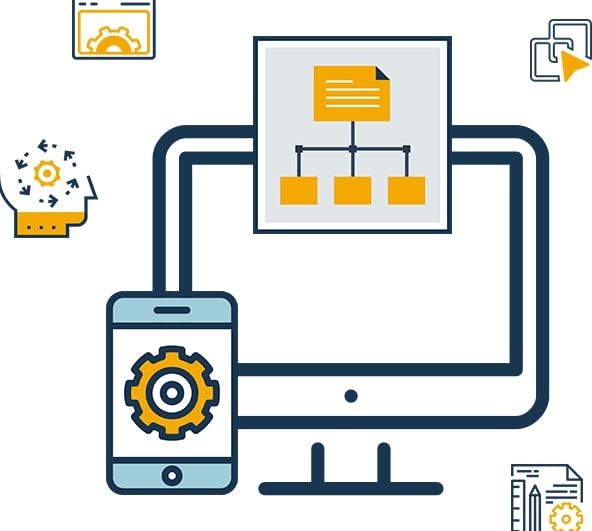
The specifications are an essential step in the mobile apps development segment. The overall functional and technical specifications of software help us to understand your vision for creating the exact solution as per the requirements. By following this, here you can also identify the app’s core features and other functionalities. The features and functionality of a product help the users by increasing the user experience more comfortable while using. In this stage, the developers will build the scope of your product, which will help you to estimate the project appropriately. No matter what types of businesses you wanted to run, the stage of planning is essential. The more information and data you can collect, it will help to define the project faster and easier to get the final result conveniently.
The Pre-Development Process
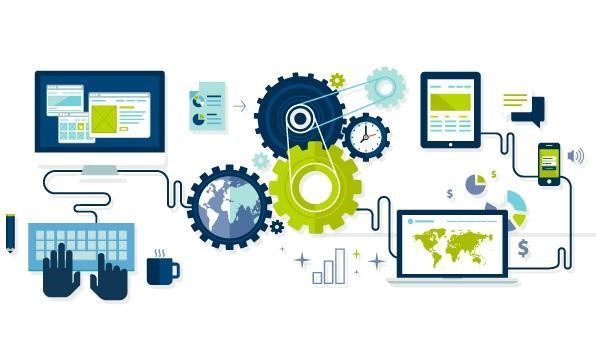
The pre-development process is essential for custom web app development and mobile app development to define all projects. In the beginning, it helps to start from creating drafts and transforming ideas to the presenting of the app, including the concept of images and UX journeys. You can also have a good range of ideas to discover, including the essential elements of custom software development since it defines the entire project. To ensure the pre-development process, the developers have to make sure the prototype of the project and other technical approval before going down to the business. This process requires two stages and these are;
Build Prototype
Build an MVP
Build a Prototype
The prototype is the section of an app where everything comes with clickable elements. It is the best way to identify how the software would work and feel once it is released. However, some of the service providers and app developers may not be willing to do a free prototype because it demands so much time and effort to complete. In this stage, you will probably receive some design and drafts, including the images, to understand the upcoming work of the prototype. This phase is preferable to evaluate the teamwork to get one step closer to building apps successfully.
Build an MVP
An MVP stands for the Minimal Viable Product. An MVP is the mini version of the software, which is completely developed and has sufficient features to be published and used by the beta testers. However, this stage is still associated with the pre-development process. Also, doing early tests of software that may come with the initial idea of an app requires significant changes. The MVPs section will also allow the engineers to verify whether they are creating an engaging experience for the end-users or not. The developers may use beta testers or different user testing websites like Google and other play stores to identify the demographics and analytics from their opinion. It will help to know if there are any changes then alter the targeted audience and approach if required.
The Final Development Process
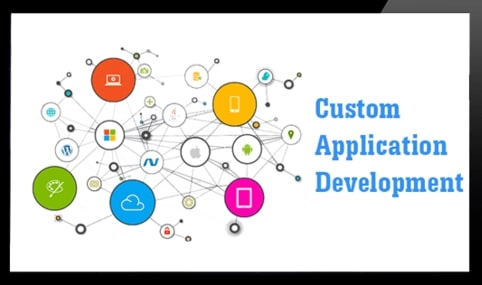
After completing all the processes, the final development is the last stage of app development to create or build software successfully. The final process of the software development involves MVP, which sets the process for the upcoming development procedures. However, software development is the stage of coding to transform ideas into reality. The apps development techniques also involve programming languages, including the selected frameworks and so on. The developers will do all the things to complete the custom application development. After the complication of the work, the client has to decide on the app handover and control the process. The client also has to make sure about the app storage location and servers or cloud. It will help them later if any sort of development is required to track the progress. At this point, the developers can work comfortably with the development timeline without facing any significant blockers and other functional problems. The development stage also includes;
UI/UX Design
Back-End Development
Front-End Development
UI & UX Design
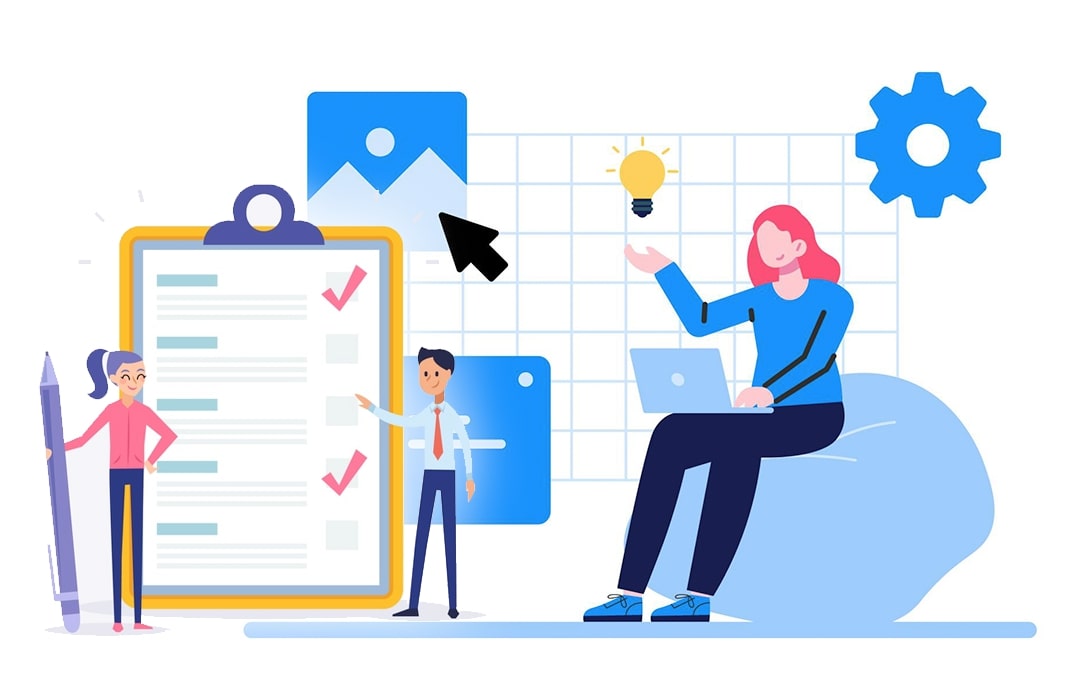
The UI & UX design is essential to deliver the smooth user experience of software with an elegant look. The app design is essential to ensure that end-users get the best user experience ever. The successful design of a mobile app describes the end-users acceptance while using it and benefiting from its features. However, the effective UI/UX design of a mobile app helps to build excellent user experiences. This process also helps the developers to make an app interactive, spontaneous, and user-friendly for the end-users. The design section requires wireframes, which help to develop the visual structure to your app’s functional requirements. The development of wireframe is not the only emphasis on aesthetics but also the user experience. This stage is not focused on the style, patterns, or color. It is the cost-effective approach for designing app layouts to identify the design review process. Additionally, the style guide is essential, it helps to keep your app’s look and feel stable. Also, the mockup and prototype are crucial to the app’s design and functionality.
Back-End Development
The development stage also required building the back-end, including the database and other essential objects for supporting functions of your software. Using the back-end platform is negotiable for supporting the desired mobile or the operating system’s functionality. Another thing is the APIs, it is a process of communication between the app and database or the backend server.
Front-End Development
Front-end development is the last stage of building software, where the users will interact with the end-users. Several kinds of apps or software include interactive user experiences, which used an API and a back-end for the management of data. Sometimes it is required when an app needs to allow users to use the software without internet access. In this case, the developers need to make an app with the use of local data storage. To build an app successfully, the developers can use different web programming languages and databases. To develop native mobile apps, the developers have to select a technology stack as per the requirement for each mobile OS platform. The Objective-C or Swift programming language is used to develop iOS apps. While developing android apps, most of the developers use Java or Kotlin. There are several frameworks and technology stacks available to do mobile app development conveniently.
Testing
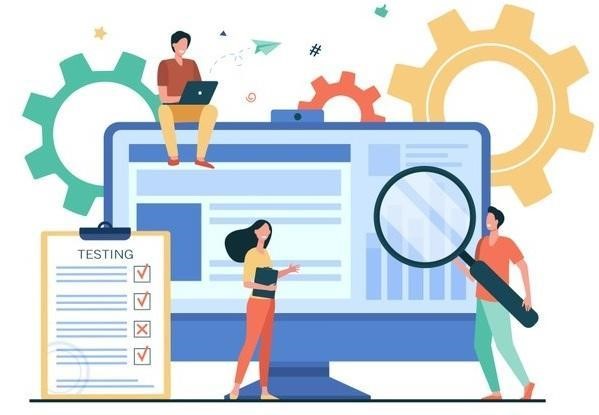
Once the development of software is completed, it is time to test the app excellently. It is the stage to identify the development process flow that makes applications stable, functional, and secure. However, the software test cases involve different sorts of steps to know the testing results for software quality assessment and tracking fixes for re-testing. While testing the user experience of an app, it comes with the visuals, workflow, and interactivity of the software where the developers need to make sure that the app matches the original design guidelines. Secondly, the developers need to test the functionality to make sure that users can use the app’s features and functionality without any problem. Thirdly, the performance of an app needs to be tested depending on the user requests, app loading, and other issues. Lastly, the software security and platform required testing to make it suitable for the end-users by ensuring that they are using a trusted service.
Maintenance & Support
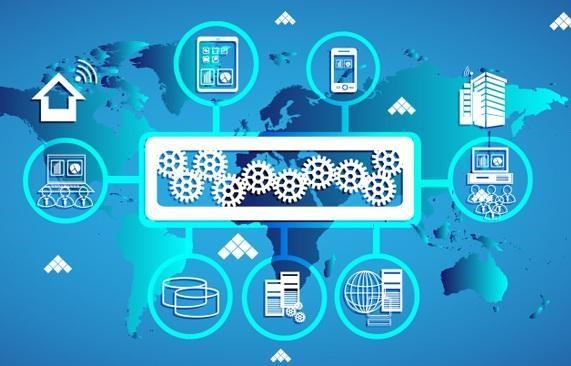
After finalizing the app by launching to the desired play store, it is essential to do the development and improvement of the software is negotiable. It will help the end-users by solving several problems like bug fixing, adding new features, improvements, re-design, and other application changes. It will assist the developers in making the software relevant to the end-user as per their current needs and requirements. Additionally, maintenance and support are significant to keep the software fresh and comfortable for the end-users. After completing the process of app development, it is essential to keep the software up to date by improving its features and programs as per the user requirements. Most software development companies and professional developers provide maintenance & support after the development of an app.
Why is Custom App Development Important?
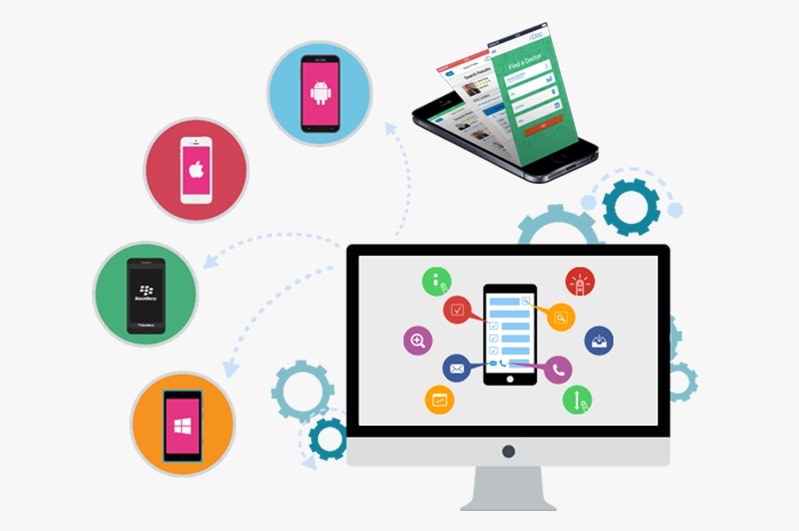
Custom app development is essential for operating different sorts of businesses and organizations conveniently. However, a custom app can help a business in many ways by meeting the unique requirements at a cost-competitive with purchasing to maintaining and modifying. Having cost-effective custom software in the business increases the efficiency of the business by accelerating economic growth. It also helps to build support processes swiftly and productively to operate a business conveniently. These sorts of mobile apps can convert any business or organization with convenient changes. By using this kind of app, a business can have lower integration costs to communicate and operate with their existing infrastructure. Custom software can also increase profitability by increasing sales with the targeted audience. You can get different types of benefits by operating a business using custom software rather than the traditional system.
